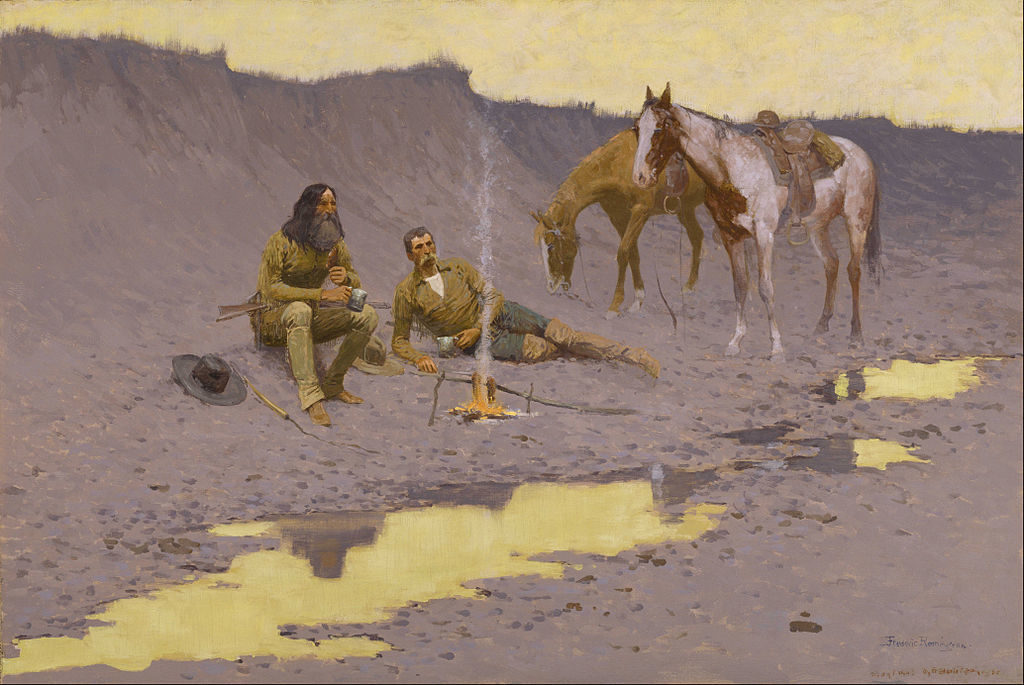
This is the fourth installment in our series about tracking taken from “Mountain Scouting – A Hand-Book for Officers and Soldiers on the Frontiers” by Edward S. Farrow, 1881. Farrow describes tracking horses and how you can tell the speed and the condition of their travel. If you missed the first three installments, please click the links below.
The Difficult Art of Tracking – Part 1
The Difficult Art of Tracking – Part 2
The Difficult Art of Tracking – Part 3
THE TRAIL, SIGNS AND SIGNALS.
From “Mountain Scouting – A Hand-Book for Officers and Soldiers on the Frontiers” by Edward S. Farrow, 1881.
Horse or pony tracks may be followed over any ‘trail’; but it is often difficult to follow them over rocks or very hard ground. When they pass over grass without trodding it down, the ‘trail’ is shown by the grass assuming a different shade of color from that about it
The appearance of horse or pony tracks is very different at a walk, trot and gallop. The Indian pony is seldom or never shod, and the distance between his tracks (walking) is about 2 feet and 10 inches. The track may be readily distinguished from that of the American horse (larger and generally shod), or that of the mule (about the same size, but narrower and more angular).
When the pony trots, the tracks are from 6-½ to 7-½ feet apart, the impressions less distinct and more irregular
From planting and preserving, to off-grid living, Lehman’s is home to hundreds of practical goods.
Lost Wit and Wisdom is a proud affiliate of Lehman’s
In the gallop, they are from 8 to 9 feet apart, and unless the ground is very hard, there are no distinct impressions, but a mere disturbance of the earth.
A careful study of the impression left on the ground will serve to determine the pace at which the animal was moving. A walking or feeding horse should leave a well marked track, and a sudden scattering of earth, sand or gravel would indicate fright and an increased pace.
A knowledge of the movements of the pony, will frequently give valuable information regarding the rider – whether he is moving leisurely and is subject to surprise, or whether he has discovered his pursuers and is moving rapidly on in order to avoid a conflict.
To determine whether the horses have riders or are running loose, follow the trail until ordure is found: when scattered along the ‘trail,’ it is a sure sign that the animal was ridden and not permitted to stop. An equally good test, is to follow the ‘trail’ into a woods and observe whether or not it lies under any branches of the trees too low to permit the easy passage of a mounted man beneath them.
An Indian rider always mounts on and dismounts from the right side, and by noticing the places where the mounts and dismounts are made, it may be ascertained whether the rider is an Indian or white man.
The moisture where the earth is removed and the droppings along the ‘trail’ are good indications of the age of the tracks. Where water has been crossed, the ground will, for some distance beyond, be wet, and show where the drops of water have fallen from the animal’s body or legs or where it has been splashed while in the act of crossing.
Tracks on snow may be followed with great rapidity, but it is frequently difficult to distinguish between those left by different animals.
The mode of shoeing, any defects in the hoofs or shoes, and whether shod all around, on the fore feet only, or not at all, should be carefully noted, as such items are sure to furnish valuable information at some time or another.
Note from Lost Wit and Wisdom: In the fifth and final installment on tracking, we find a description of how to disguise your tracks and descriptions of how to read the behavior of various animals you encounter along the trail and what that indicates for the trail beyond.